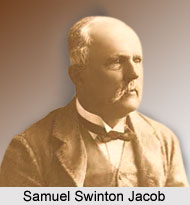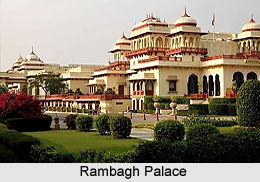 Samuel Swinton Jacob was an English engineer, architect and writer. He is a well known planer famous for designing many famous buildings of India in the Indo-Saracenic style. He has mostly active in India.
Samuel Swinton Jacob was an English engineer, architect and writer. He is a well known planer famous for designing many famous buildings of India in the Indo-Saracenic style. He has mostly active in India.
Early Life of Samuel Swinton Jacob
Samuel Swinton Jacob was a son of Lieutenant-Colonel William Jacob. He was born 14th January 1841. He was brought up in the family of his uncle Philip Jacob. Samuel`s stayed in India until 1844. Later he died in England on 5th June 1854. Samuel studied in Cheam and at the East India Company military college at Addiscombe. He also served at the Bombay Artillery in 1858, and later in 1863 qualified as a surveyor and engineer.
Samuel Swinton Jacob as an Architect
Samuel Swinton Jacob first joined the Royal Artillery and then transferred to the Indian Army. He was then trained as an engineer in the Public Works Department of British India. In 1867 he was appointed Executive Engineer in Jaipur. He thus headed an important position in public works department that was founded in 1860. This department also had many other local craftsmen and draughtsmen including graduates from the School of Art. The chief work of the PWD was the construction of roads and canals. Its architectural projects were mostly utilitarian. Jacob however, differed in his views from many of his colleagues in the British PWD. He had a more modest view of the architectural plan and designs of the buildings. He was known for his admiration and high esteem for local building traditions and skills. In his designs he incorporated many Indian architectural features. Jacob is credited with designing and building many substantial and significant buildings in India, both for the Government, as also for private individuals. His designs and architectural patterns had a touch of Indian classical elements. He was also an advisor during the development of plans for New Delhi. For his extraordinary skills he was promoted to the rank of Lieutenant Colonel on 6th February 1885, and to that of Colonel 6th February 1889. He was made a Knight Commander of the Indian Empire on 26th June 1902.
He married Mary Hilton, daughter of the fleet paymaster J T Sueter RN, on 28th April 1874. They had no children. He returned to England in 1911 where he died at Weybridge on 4th December 1917.
Notable buildings designed by Samuel Swinton Jacob
Some of the important buildings that have been designed by Samuel Swinton Jacob are:
St. Stephen`s College
The main building for St. Stephen`s College located in Delhi at Kashmiri Gate was built by him from 1890 to 1891.
Albert Hall
Albert Hall also known as the Government Central Museum was also designed by Jacob. It is situated on Ram Niwas Bagh and was built between 1881 and 1886.
Rambagh Palace
 Rambagh Palace also known as Jewel of Jaipur was designed by Jacob in the year 1835. It was built under the patronage of Queen of Jaipur.
Rambagh Palace also known as Jewel of Jaipur was designed by Jacob in the year 1835. It was built under the patronage of Queen of Jaipur.
Scottish Presbyterian Mission Church
Scottish Presbyterian Mission Church was built 1913-1916 on the land that was donated by His Highness Sawai Madho Singh II at Chandpole, Jaipur. It design was approved by Jacob.
Bikaner House
The Bikaner House located on Mount Abu was built on the designs of Jacob in 1893. It was built as a summer residence for the Maharaja of Bikaner. This has now been converted into the Palace Hotel.
Laxmi Niwas Palace
Laxmi Niwas Palace served as the residential palace of the king of the former Bikaner state, Maharaja Ganga Singh. It was designed by Samuel Jacob in the year 1902.
Lalgarh Palace
Lalgarh Palace located in Bikaner was built between 1896 and 1926 by Jacob. It was built for H.H. Sir Ganga Singh, Maharaja of Bikaner.
Umaid Bhawan Palace
The Umaid Bhawan Palace is located at Jodhpur. It was built between 1929 and 1944 on the designs proposed by Jacob.
King George Medical College
The King George Medical College was established in 1911 and has played a major role in the advancement of knowledge in biomedical sciences. The college was later converted as the Chhatrapati Shahuji Maharaj Medical University by the Government of Uttar Pradesh.
Daly College
The Daly College, located in Indore in Madhya Pradesh, was founded by Sir Henry Daly of the British Indian Army. It was established in 1881 on the designs of Jacob.






































